
Manuel Antonio: Nature's Paradise in Costa Rica
Discover Manuel Antonio, Costa Rica's natural paradise with stunning beaches, lush rainforests, and diverse wildlife. Perfect for nature lovers and adventure seekers.
Manuel Antonio, a small coastal town in Costa Rica, is a gem for nature lovers and adventure seekers. Known for its stunning national park, Manuel Antonio National Park, the town offers pristine sandy beaches, lush rainforests, and a diverse array of wildlife. Whether you're looking to relax on the beach, hike through tropical forests, or spot exotic animals, Manuel Antonio has something for everyone. The town itself is charming with its laid-back atmosphere and friendly locals. Visitors can enjoy a variety of activities including zip-lining, surfing, and snorkeling. The local cuisine is a delightful blend of traditional Costa Rican flavors with fresh seafood being a highlight. Don't forget to try the local dish, casado, which is a hearty meal of rice, beans, plantains, salad, and your choice of meat or fish. Manuel Antonio is also known for its eco-friendly initiatives and commitment to preserving its natural beauty. Many of the accommodations in the area are eco-lodges that provide a unique and sustainable travel experience. With its breathtaking landscapes and rich biodiversity, Manuel Antonio is a must-visit destination for anyone traveling to Costa Rica.
Local tips in Manuel Antonio
- Visit Manuel Antonio National Park early in the morning to avoid crowds and see more wildlife.
- Bring cash as some local shops and restaurants do not accept credit cards.
- Wear comfortable shoes for hiking and exploring the park's trails.
- Consider staying in an eco-lodge to fully immerse yourself in the natural surroundings.
- Be mindful of the local wildlife and follow park guidelines to help preserve the ecosystem.
- Try the local dish, casado, for a true taste of Costa Rican cuisine.
Manuel Antonio: Nature's Paradise in Costa Rica
Manuel Antonio, a small coastal town in Costa Rica, is a gem for nature lovers and adventure seekers. Known for its stunning national park, Manuel Antonio National Park, the town offers pristine sandy beaches, lush rainforests, and a diverse array of wildlife. Whether you're looking to relax on the beach, hike through tropical forests, or spot exotic animals, Manuel Antonio has something for everyone. The town itself is charming with its laid-back atmosphere and friendly locals. Visitors can enjoy a variety of activities including zip-lining, surfing, and snorkeling. The local cuisine is a delightful blend of traditional Costa Rican flavors with fresh seafood being a highlight. Don't forget to try the local dish, casado, which is a hearty meal of rice, beans, plantains, salad, and your choice of meat or fish. Manuel Antonio is also known for its eco-friendly initiatives and commitment to preserving its natural beauty. Many of the accommodations in the area are eco-lodges that provide a unique and sustainable travel experience. With its breathtaking landscapes and rich biodiversity, Manuel Antonio is a must-visit destination for anyone traveling to Costa Rica.
When is the best time to go to Manuel Antonio?
Iconic landmarks you can’t miss
Parque Nacional Manuel Antonio
Explore the stunning landscapes and diverse wildlife of Parque Nacional Manuel Antonio, a Costa Rican gem perfect for nature lovers and adventure seekers.
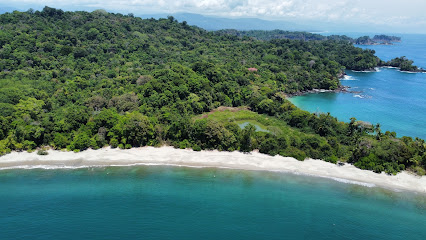
Marina Pez Vela
Experience the vibrant marina life at Marina Pez Vela, where stunning ocean views, gourmet dining, and thrilling adventures await in Quepos, Costa Rica.

Manuel Antonio Falafel Bar
Experience the best of Middle Eastern cuisine at Manuel Antonio Falafel Bar, where fresh flavors meet tropical vibes in a vibrant dining atmosphere.
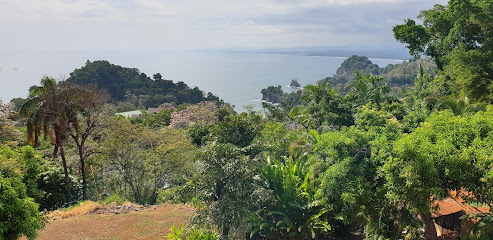
El Patio de Café Milagro
Discover the vibrant flavors of Costa Rica at El Patio de Café Milagro, a must-visit restaurant and café in Quepos offering delicious local cuisine and unique gifts.
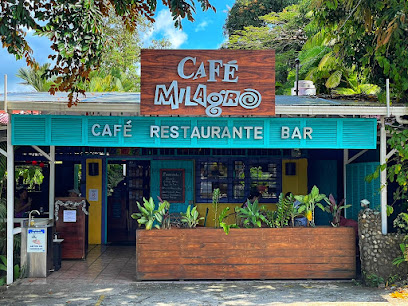
Agua Azul
Discover the flavors of Costa Rica at Agua Azul, a delightful restaurant in Quepos offering authentic cuisine and a vibrant dining experience.
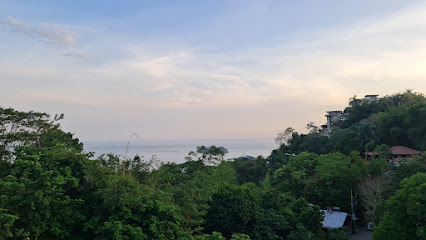
Rainmaker
Explore the breathtaking Rainmaker in Costa Rica, where lush landscapes and stunning waterfalls await every nature lover and adventure seeker.
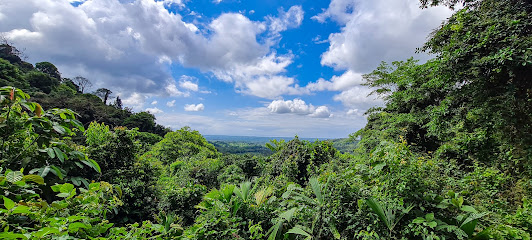
Manuel Antonio Beach
Discover the stunning beauty of Manuel Antonio Beach, where soft sands meet vibrant wildlife and unforgettable adventures await in Costa Rica.
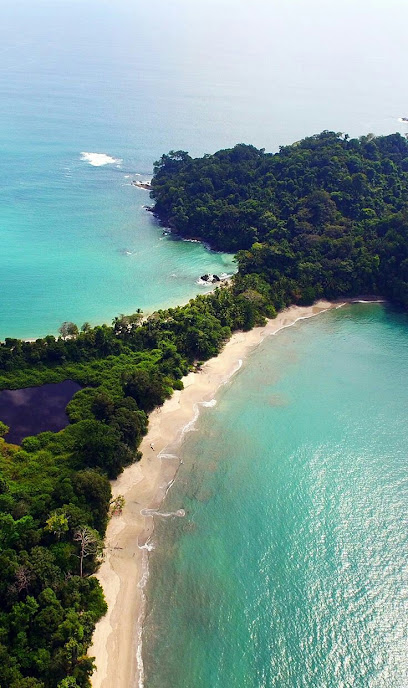
Soda El Angel
Experience the authentic flavors of Costa Rica at Soda El Angel in Quepos, where delicious dishes and warm hospitality await every visitor.
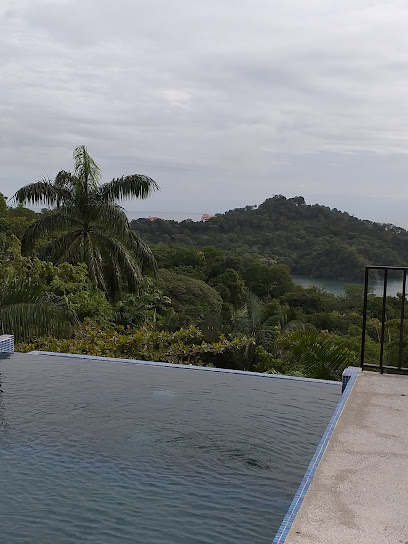
Parque Nahomi
Explore the serene beauty and vibrant flora of Parque Nahomi, a natural gem in Quepos, Costa Rica, perfect for relaxation and sunset views.
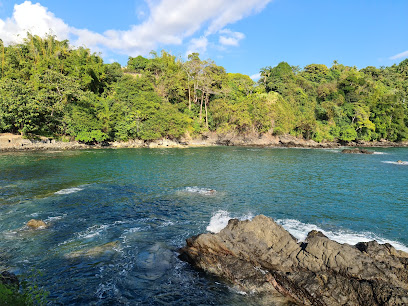
El Faro Beach Hotel
Experience the lush beauty and serenity of El Faro Beach Hotel, your gateway to adventure in Manuel Antonio, Costa Rica.
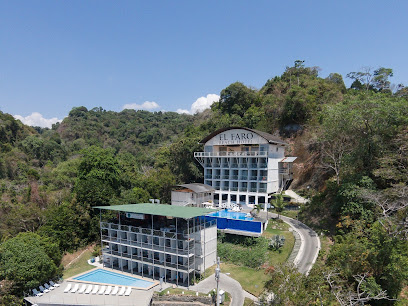
Los Campesinos Ecolodge
Experience the beauty of Costa Rica at Los Campesinos Ecolodge, where nature meets sustainability in an eco-friendly paradise.
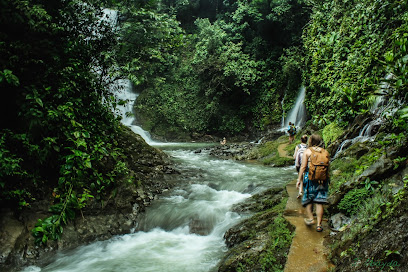
Mangrove Monkey Tour / Chinese
Experience the breathtaking biodiversity of Costa Rica's mangroves with the Mangrove Monkey Tour, a journey into nature's playground.
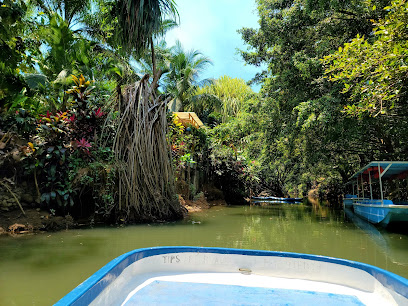
The Falls Resort at Manuel Antonio
Experience the tranquil beauty of The Falls Resort at Manuel Antonio, where comfort meets adventure in the heart of Costa Rica's stunning landscapes.

Villa Vanilla Spice Tour and Shop
Immerse yourself in the world of spices at Villa Vanilla Spice Tour and Shop, a unique Costa Rican experience near Quepos.
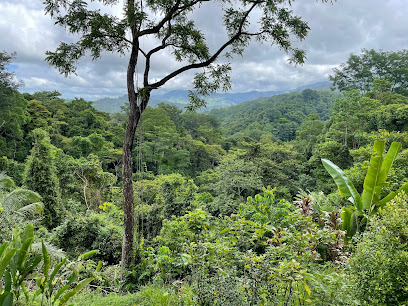
El Santuario Canopy Adventure Tour
Discover the thrill of zip-lining through the lush canopies of Costa Rica at El Santuario Canopy Adventure in Manuel Antonio.
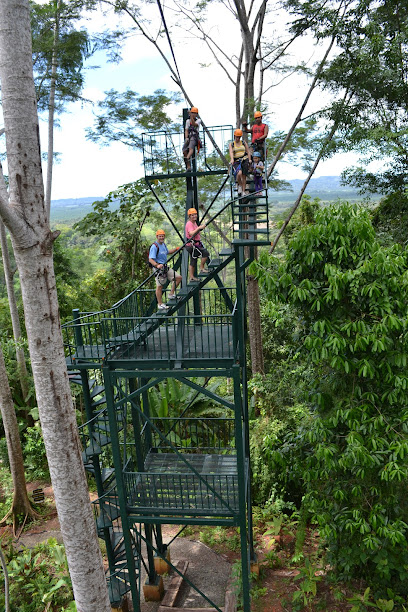
Unmissable attractions to see
Marina Pez Vela
Discover the beauty and adventure of Marina Pez Vela, a premier destination in Quepos offering unforgettable ocean experiences and culinary delights.
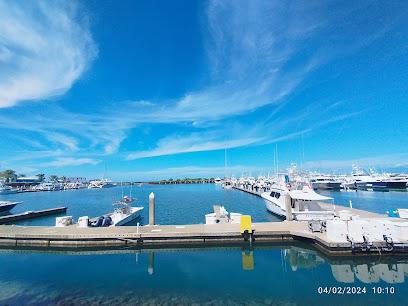
Parque Nacional Marino Ballena
Explore the breathtaking beauty of Parque Nacional Marino Ballena, a national park in Costa Rica known for its stunning landscapes and diverse marine life.
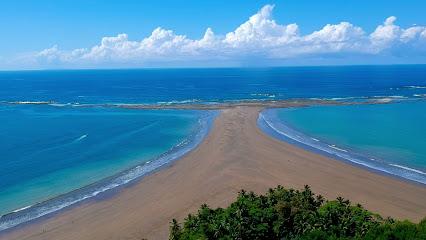
Manuel Antonio Beach
Explore the stunning Manuel Antonio Beach, where lush rainforests meet pristine shores and vibrant wildlife awaits in Costa Rica's tropical paradise.
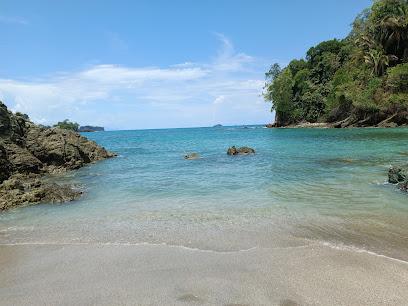
Rainmaker
Experience the breathtaking beauty of Rainmaker, a hidden paradise in Costa Rica's Puntarenas Province, featuring stunning waterfalls and vibrant wildlife.
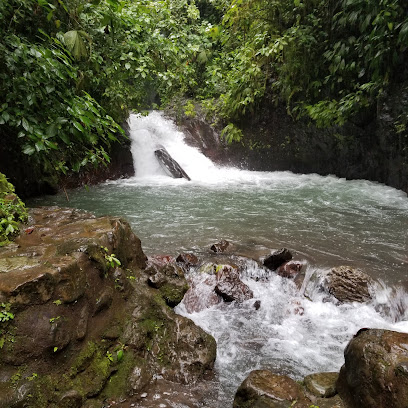
Nauyaca Waterfall Nature Park
Discover the breathtaking beauty of Nauyaca Waterfall Nature Park, where lush landscapes and stunning waterfalls await in Costa Rica.
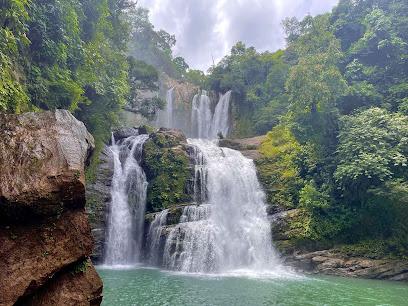
Parque Reptilandia
Explore the vibrant world of reptiles at Parque Reptilandia, a captivating sanctuary in Platanillo, Costa Rica, dedicated to conservation and education.
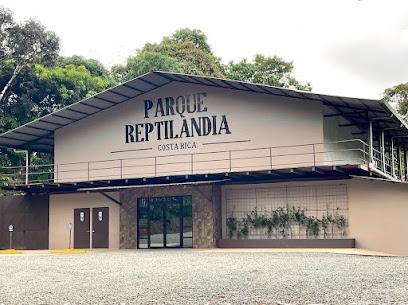
Biesanz Beach
Discover the tranquil beauty of Biesanz Beach in Quepos, where golden sands meet crystal-clear waters amidst lush tropical scenery.
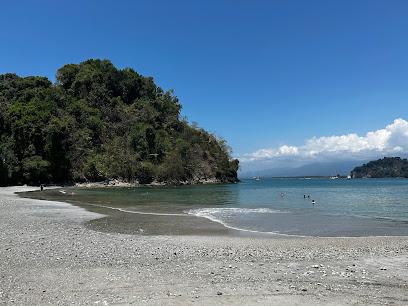
Catarata Eco Chontales
Explore the breathtaking Catarata Eco Chontales, a stunning waterfall in Pérez Zeledón, Costa Rica, surrounded by lush nature and vibrant wildlife.
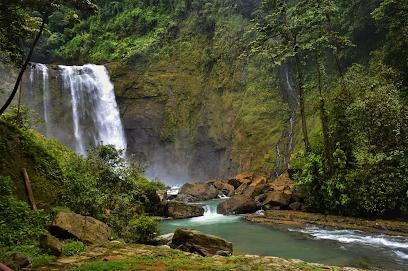
Bejuco Beach
Experience the tranquility of Bejuco Beach in Puntarenas, Costa Rica, a hidden paradise perfect for relaxation and adventure by the sea.
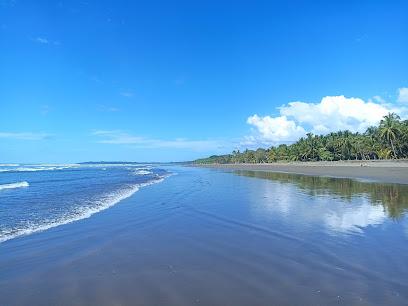
Los Campesinos Ecolodge
Discover the tranquil beauty of Los Campesinos Ecolodge in Naranjito, where nature meets sustainable living in Costa Rica's lush landscapes.
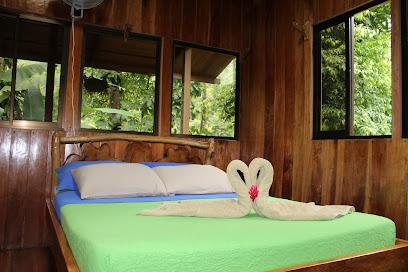
Mangrove Monkey Tour / Chinese
Discover the enchanting Mangrove Monkey Tour in Quepos, Costa Rica, where wildlife and breathtaking scenery await to create unforgettable memories.
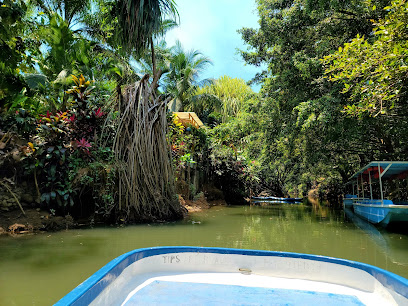
The Park At Ocean Ranch
Explore the wonders of nature and adventure at The Park At Ocean Ranch in Jaco, Costa Rica. A perfect blend of excitement and serenity awaits.
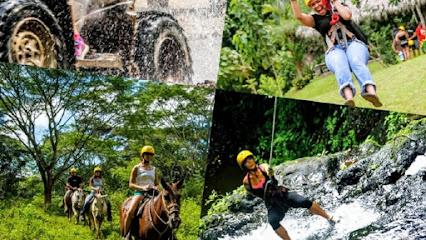
Manuel Antonio Nature Reserve & Wildlife Refuge
Explore the breathtaking Manuel Antonio Nature Reserve, where pristine beaches meet lush rainforests and vibrant wildlife in Costa Rica's stunning paradise.
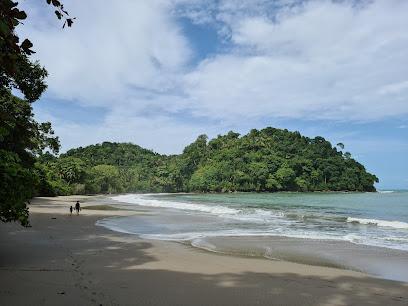
Playa Las Gemelas
Experience tranquility at Playa Las Gemelas, Costa Rica's hidden gem featuring pristine beaches, stunning views, and a peaceful atmosphere perfect for relaxation.

Playa Las Gemelas
Experience the tranquil beauty of Playa Las Gemelas in Quepos, Costa Rica – a serene escape for beach lovers and adventure seekers alike.
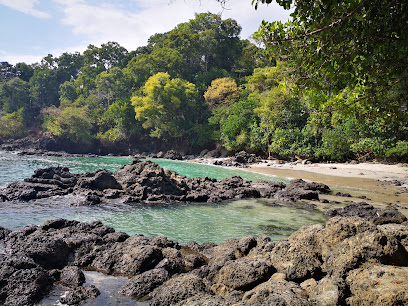
Essential places to dine
Manuel Antonio Falafel Bar
Indulge in mouthwatering Middle Eastern cuisine at Manuel Antonio Falafel Bar—where fresh flavors meet a relaxed atmosphere.
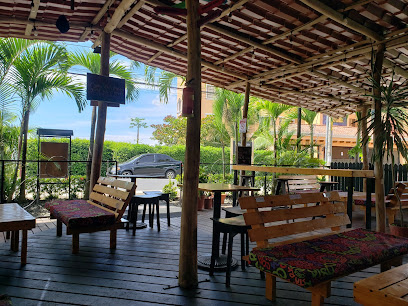
El Patio de Café Milagro
Experience authentic Costa Rican flavors at El Patio de Café Milagro - your go-to spot for coffee and cuisine in Quepos.
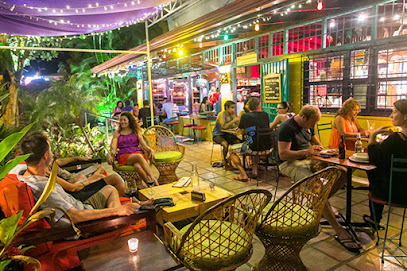
El Wagon
Discover El Wagon in Quepos: where artisanal pizzas meet Costa Rican hospitality for an unforgettable dining experience.
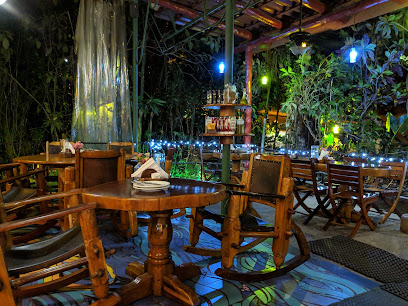
Marisquería Sabromar
Discover fresh seafood delights at Marisquería Sabromar in Boca Vieja - where taste meets tradition in every bite.
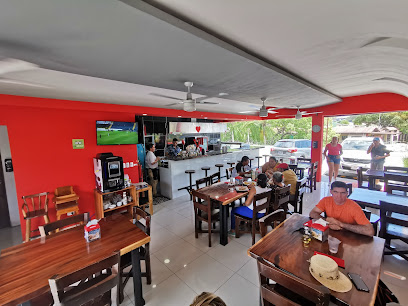
Emilio's Cafe
Experience the best of Costa Rican cuisine at Emilio's Cafe in Manuel Antonio – where fresh seafood meets delightful desserts.

Namaste Indian Restaurant, Manuel Antonio
Experience authentic Indian flavors in the heart of Manuel Antonio at Namaste Indian Restaurant – where every meal is a celebration.
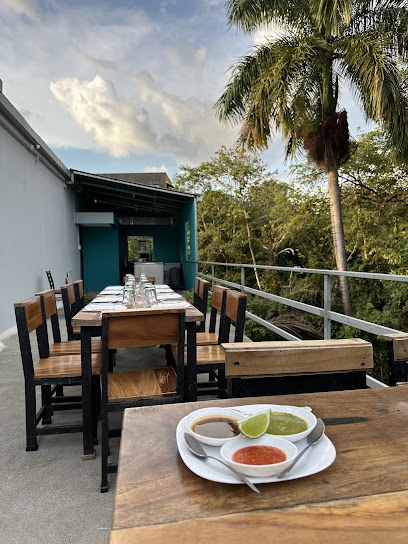
Agua Azul
Discover authentic Costa Rican flavors at Agua Azul in Quepos—where stunning views meet delectable dishes.
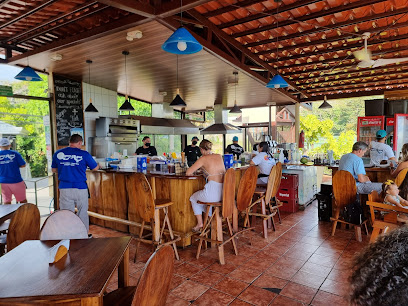
Restaurante Ronny's Place
Discover authentic Costa Rican flavors at Ronny's Place in Quepos - where fresh ingredients meet warm hospitality.
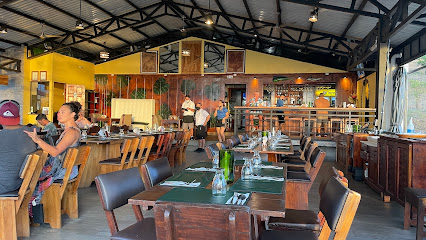
Soda El Angel
Experience authentic Costa Rican cuisine at Soda El Angel in Quepos – where delicious food meets friendly service.
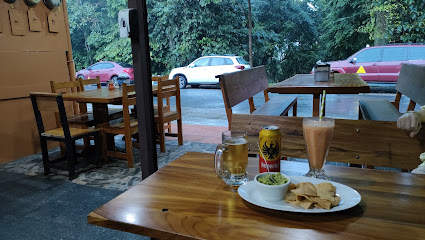
Rafaeles Las Terrazas (Raphael's Terrazas)
Experience culinary excellence at Rafaeles Las Terrazas with stunning ocean views and exquisite local cuisine in Manuel Antonio.

Restaurante Buru Seaside Manuel Antonio
Experience exquisite seafood dining with stunning ocean views at Restaurante Buru Seaside near Manuel Antonio National Park.
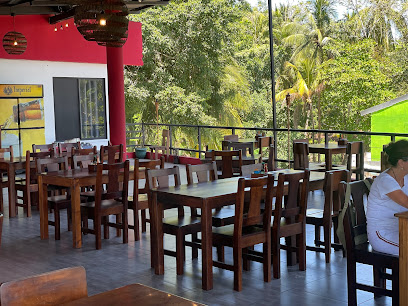
Hola Indian Restaurant Manuel Antonio
Experience authentic Indian flavors amidst the lush beauty of Costa Rica at Hola Indian Restaurant Manuel Antonio.
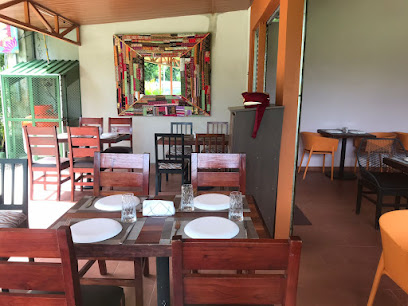
Baldi's Fresh Restaurant
Discover authentic Costa Rican cuisine at Baldi's Fresh Restaurant in Quepos – where fresh ingredients meet vibrant flavors.
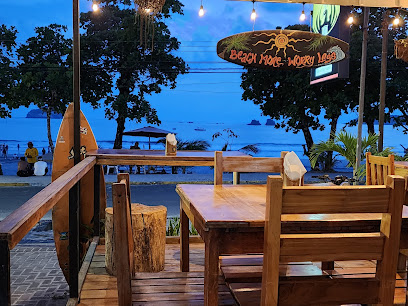
Samui Thai
Discover authentic Thai cuisine at Samui Thai in Quepos - a perfect blend of flavors set against Costa Rica's stunning backdrop.
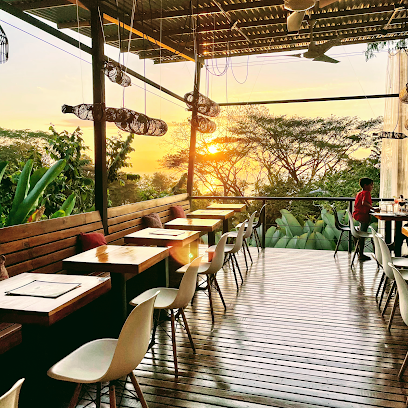
El Lagarto
Experience exquisite barbecue and vibrant ambiance at El Lagarto in Quepos – where every meal becomes a memorable celebration of flavors.
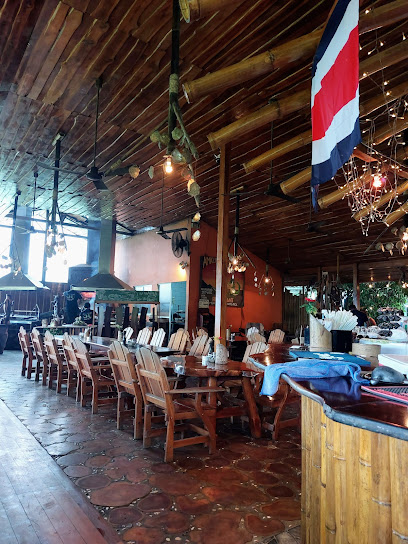
Markets, malls and hidden boutiques
Super Joseth
Explore the vibrant flavors of Costa Rica at Super Joseth, Quepos' premier grocery store for fresh produce and local delicacies.
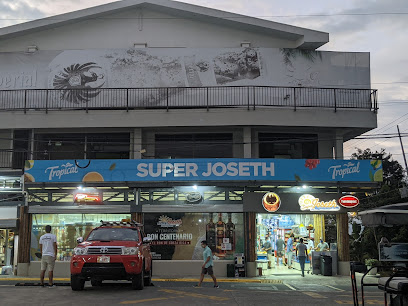
Luna Llena Collectiv Art Cafe Boutique
Discover the artistic charm and culinary delights at Luna Llena Collectiv Art Cafe Boutique in Manuel Antonio, Costa Rica.

Modern Primitive Living
Shop for unique Costa Rican gifts, handcrafted art, and exquisite home decor at Modern Primitive Living in Quepos.

ALTAIR SOUVENIR & COFFEE BEAN SHOP
Explore the vibrant artistry and flavors of Costa Rica at ALTAIR SOUVENIR & COFFEE BEAN SHOP, your go-to destination for unique gifts and artisan chocolates.
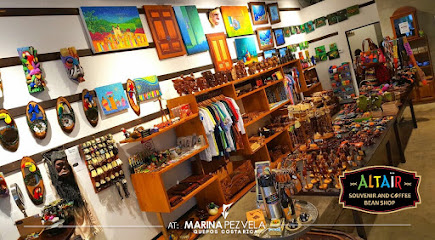
Ummará Swimwear
Discover stylish swimwear and beach attire at Ummará Swimwear in Quepos, Costa Rica - the perfect stop for beach lovers!
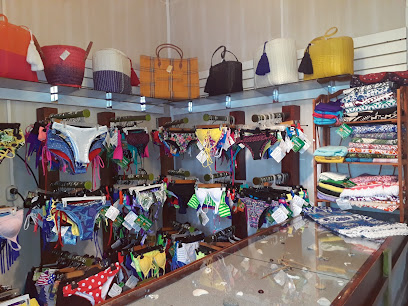
Mariposita Gift Shop & Gallery
Explore the vibrant Mariposita Gift Shop & Gallery in Quepos, where local artistry and unique treasures await every traveler.
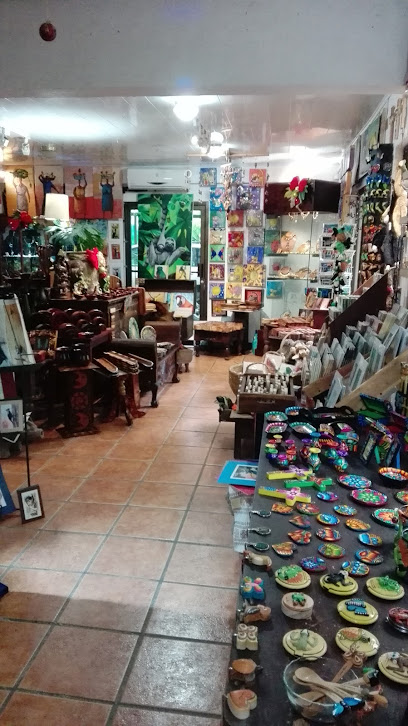
Sloth Souvenir
Discover unique Costa Rican handicrafts and clothing at Sloth Souvenir in Manuel Antonio, perfect for eco-conscious travelers seeking authentic souvenirs.
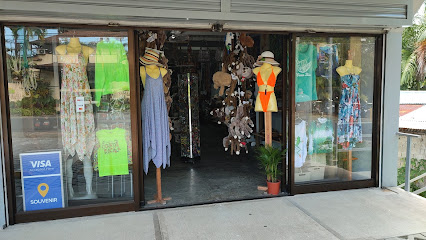
ALTAIR CAFE & SOUVENIR - MANUEL ANTONIO
Explore the heart of Manuel Antonio at Altair Cafe & Souvenir, where local craftsmanship meets delicious Costa Rican flavors.

Jungle Avenue
Explore the vibrant boutique Jungle Avenue in Quepos, where unique clothing and handcrafted jewelry await in a tropical paradise.
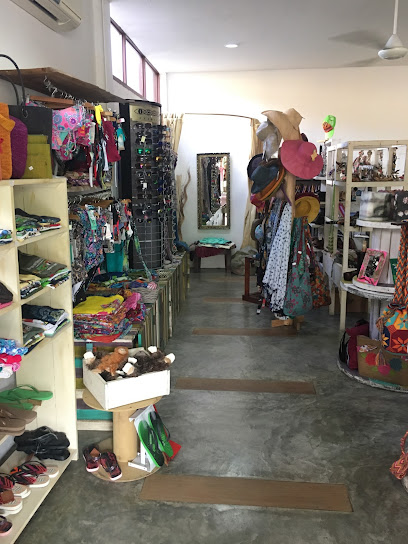
Bam Bam Boo
Discover unique Costa Rican fashion at Bam Bam Boo, a vibrant clothing store in Quepos that embodies local culture and style.

Indigo by Jungle Sol
Indigo by Jungle Sol: Your go-to boutique for authentic Costa Rican crafts and unique souvenirs in Quepos.
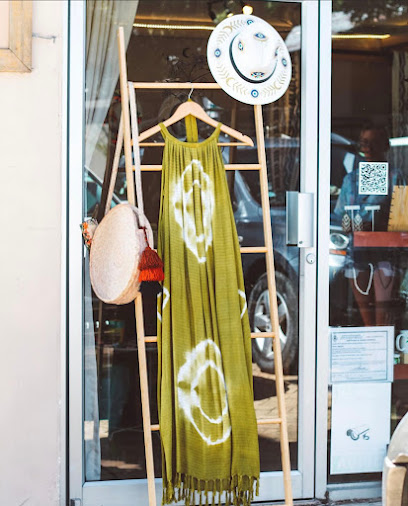
Marea - Mara Cantarella Joyeria
Discover exquisite handcrafted jewelry at Marea - Mara Cantarella Joyeria in Quepos, where local craftsmanship meets elegance.
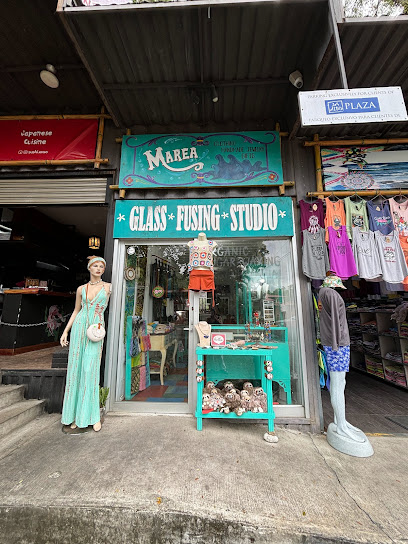
Plaza vista, Manuel Antonio, Quepos
Discover the vibrant Plaza Vista in Manuel Antonio, a shopping paradise filled with local culture, delightful dining, and unique shopping experiences.

Market and Liquor
Discover the convenience of Market and Liquor in Quepos, where essential supplies and local charm meet for an unforgettable shopping experience.
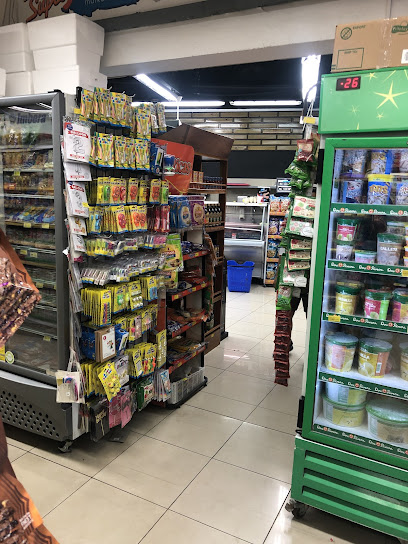
Authentica Gift Shop - Manuel Antonio
Explore the heart of Costa Rica’s craftsmanship at Authentica Gift Shop, where every item tells a story and supports local artisans.

Essential bars & hidden hideouts
Manuel Antonio Falafel Bar
Experience the vibrant flavors of Mediterranean cuisine at Manuel Antonio Falafel Bar, a must-visit culinary haven in Costa Rica.
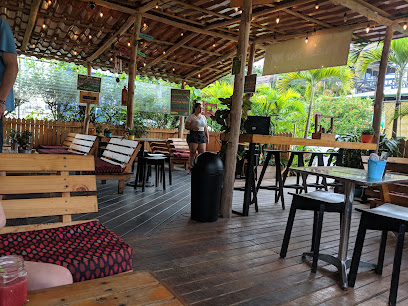
El Patio de Café Milagro
Discover the vibrant flavors of Costa Rica at El Patio de Café Milagro - a culinary gem in Quepos featuring delicious local dishes and artisanal coffee.
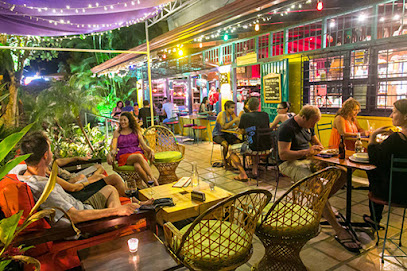
Emilio's Cafe
Experience the flavors of Costa Rica at Emilio's Cafe, a charming restaurant in Manuel Antonio known for its fresh seafood, baked delights, and inviting atmosphere.
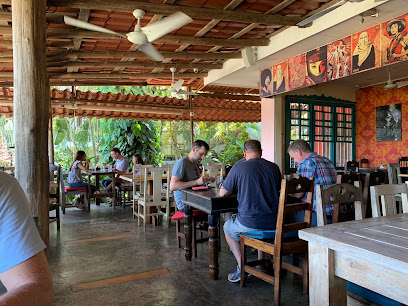
Agua Azul
Experience the vibrant flavors of Costa Rica at Agua Azul, a culinary delight in Quepos offering fresh seafood and local dishes.
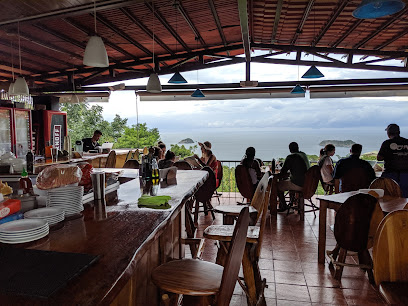
Soda El Angel
Experience authentic Costa Rican cuisine at Soda El Angel, a beloved eatery in Quepos known for its fresh ingredients and friendly atmosphere.

El Lagarto
Experience the best of Costa Rican BBQ at El Lagarto in Quepos, where flavor meets tradition in a vibrant atmosphere.
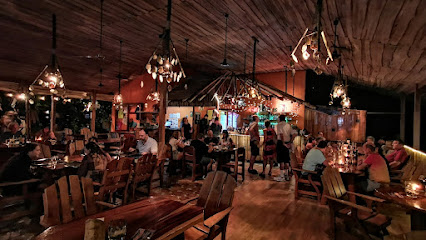
YOLO Social
Experience vibrant flavors and a lively atmosphere at YOLO Social, the perfect dining destination in Quepos, Costa Rica.
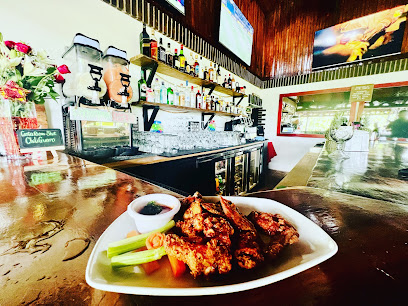
Le Papillon Restaurante
Experience the flavors of Costa Rica at Le Papillon Restaurante, a culinary treasure in Quepos that delights both locals and tourists.

Ape Eclectic Social Bar
Explore the vibrant nightlife at Ape Eclectic Social Bar in Quepos, where eclectic decor meets refreshing drinks and a lively atmosphere.
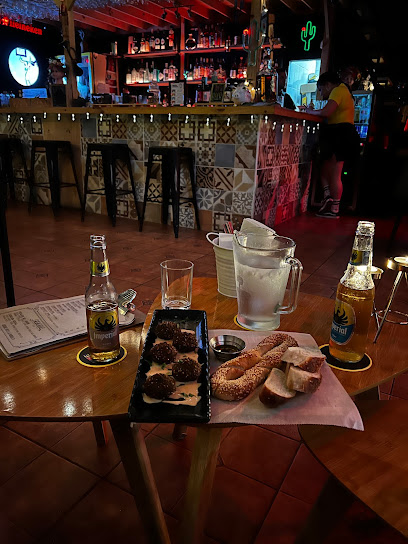
Rico Tico Jungle Grill
Experience delightful dining with stunning views of the rainforest and Pacific Ocean at Rico Tico Jungle Grill in Manuel Antonio.
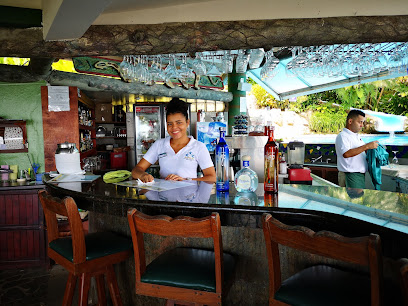
Claro Que Si Seafood Grill & Wine Bar
Experience the best of Costa Rican cuisine at Claro Que Si Seafood Grill & Wine Bar, where fresh seafood meets breathtaking views in Manuel Antonio.
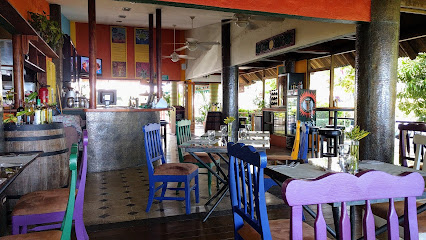
Arbol. Food & Wine.
Discover the best of local cuisine at Arbol. Food & Wine, a culinary gem near Manuel Antonio, Costa Rica, offering a unique dining experience.
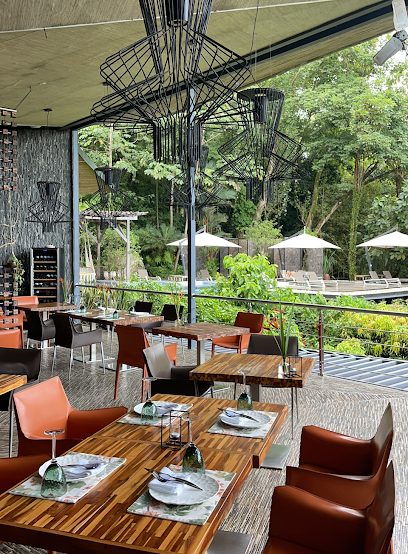
Quepoa by Agua Azul
Discover Quepoa by Agua Azul in Quepos: Family-friendly dining with fresh seafood and a vibrant atmosphere, perfect for all ages.
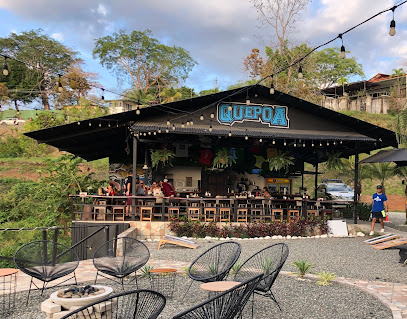
Cocos
Experience the vibrant atmosphere and tropical drinks at Cocos, the ultimate bar destination in Quepos, Costa Rica.
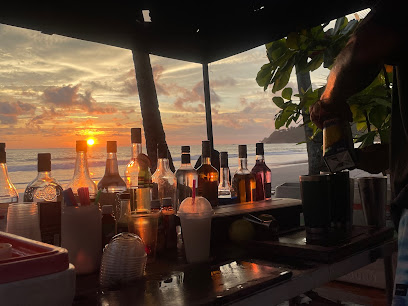
Drunken Monkey
Discover the lively Drunken Monkey bar in Quepos, Costa Rica - a vibrant spot for drinks, music, and a welcoming atmosphere.

Local Phrases
-
- HelloHola
[oh-lah] - GoodbyeAdiós
[ah-dee-ohs] - YesSí
[see] - NoNo
[noh] - Please/You're welcomePor favor/De nada
[por fah-vor/deh nah-dah] - Thank youGracias
[grah-see-ahs] - Excuse me/SorryDisculpe/Perdón
[dee-skool-peh/pehr-dohn] - How are you?¿Cómo estás?
[koh-moh ehs-tahs] - Fine. And you?Bien. ¿Y tú?
[bee-ehn. ee too] - Do you speak English?¿Habla inglés?
[ah-blah een-glehs] - I don't understandNo entiendo
[noh ehn-tee-ehn-doh]
- HelloHola
-
- I'd like to see the menu, pleaseMe gustaría ver el menú, por favor
[meh goo-stah-ree-ah behr ehl meh-noo, por fah-vor] - I don't eat meatNo como carne
[noh koh-moh kahr-neh] - Cheers!¡Salud!
[sah-lood] - I would like to pay, pleaseMe gustaría pagar, por favor
[meh goo-stah-ree-ah pah-gahr, por fah-vor]
- I'd like to see the menu, pleaseMe gustaría ver el menú, por favor
-
- Help!¡Ayuda!
[ah-yoo-dah] - Go away!¡Vete!
[veh-teh] - Call the Police!¡Llame a la Policía!
[yah-meh ah lah poh-lee-see-ah] - Call a doctor!¡Llame a un médico!
[yah-meh ah oon meh-dee-koh] - I'm lostEstoy perdido
[ehs-toy pehr-dee-doh] - I'm illEstoy enfermo
[ehs-toy ehn-fehr-moh]
- Help!¡Ayuda!
-
- I'd like to buy...Me gustaría comprar...
[meh goo-stah-ree-ah kohm-prahr...] - I'm just lookingSolo estoy mirando
[soh-loh ehs-toy mee-rahn-doh] - How much is it?¿Cuánto cuesta?
[kwan-toh kwehs-tah] - That's too expensiveEsto es demasiado caro
[ehs-toh ehs deh-mah-syah-doh kah-roh] - Can you lower the price?¿Puede bajar el precio?
[pweh-deh bah-har ehl pree-seh-oh]
- I'd like to buy...Me gustaría comprar...
-
- What time is it?¿Qué hora es?
[keh oh-rah ehs] - It's one o'clockEs la una
[ehs lah oo-nah] - Half past (10)Es la diez y media
[ehs lah dyehs ee meh-dee-ah] - MorningMañana
[mah-nyah-nah] - AfternoonTarde
[tahr-deh] - EveningNoche
[noh-cheh] - YesterdayAyer
[ah-yehr] - TodayHoy
[oy] - TomorrowMañana
[mah-nyah-nah] - 1Uno
[oo-noh] - 2Dos
[dohs] - 3Tres
[trehs] - 4Cuatro
[kwah-troh] - 5Cinco
[seen-koh] - 6Seis
[sehs] - 7Siete
[syeh-teh] - 8Ocho
[oh-choh] - 9Nueve
[nweh-veh] - 10Diez
[dyehs]
- What time is it?¿Qué hora es?
-
- Where's a/the...?¿Dónde está...?
[dohn-deh ehs-tah] - What's the address?¿Cuál es la dirección?
[kwal ehs lah dee-rehk-syon] - Can you show me (on the map)?¿Puede mostrarme (en el mapa)?
[pweh-deh mohs-trar-meh (ehn ehl mah-pah)] - When's the next (bus)?¿Cuándo es el próximo (autobús)?
[kwan-doh ehs ehl proh-ksee-moh (ow-toh-boos)] - A ticket (to ....)Un boleto (a ...)
[oon boh-leh-toh (ah ...)]
- Where's a/the...?¿Dónde está...?
History of Manuel Antonio
-
Long before the arrival of the Spanish, the region that is now Manuel Antonio was inhabited by indigenous tribes, most notably the Quepoa people. These communities were well-established and engaged in agriculture, fishing, and trade. Archaeological findings, including pottery and tools, provide evidence of their rich cultural heritage.
-
In the early 16th century, Spanish explorers arrived on Costa Rican shores. The Quepoa, along with other indigenous groups, were significantly impacted by the European invasion, suffering from diseases and displacement. The region was largely neglected by the Spanish due to its difficult terrain and the fierce resistance of the local population.
-
During the colonial era, Manuel Antonio remained a remote and sparsely populated area. While the Spanish established settlements in other parts of Costa Rica, the region's rugged landscape and dense jungle made it less appealing for large-scale colonization. Nonetheless, it served as a waypoint for occasional expeditions and resource extraction.
-
The early 20th century saw the beginnings of infrastructure development in the region. Roads and basic facilities were constructed, attracting settlers and agricultural ventures. The area's natural beauty started to gain recognition, setting the stage for future tourism.
-
In 1972, Manuel Antonio National Park was established, marking a significant milestone in the region's history. The park was created to protect the area's unique biodiversity and stunning landscapes. It quickly became one of Costa Rica's most popular tourist destinations, renowned for its pristine beaches, wildlife, and hiking trails.
-
The late 20th and early 21st centuries witnessed a dramatic increase in tourism in Manuel Antonio. The region's hotels, restaurants, and tour services expanded to accommodate the influx of international and domestic visitors. This boom brought economic benefits but also posed challenges related to environmental conservation and sustainable development.
-
Manuel Antonio's culture is a blend of indigenous heritage and modern influences. Local traditions, cuisine, and festivals reflect this rich cultural tapestry. Efforts to preserve and celebrate the region's history and natural environment are evident in community initiatives and educational programs.
Manuel Antonio Essentials
-
Manuel Antonio is located on the Pacific coast of Costa Rica, about 170 kilometers from San José, the capital city. The most common way to get there is by taking a domestic flight from San José's Juan Santamaría International Airport (SJO) to Quepos La Managua Airport (XQP), which is a short 20-minute drive from Manuel Antonio. Alternatively, you can take a bus from San José, which takes approximately 3.5 to 4 hours. Car rentals and private shuttles are also available for a more flexible and comfortable journey.
-
Within Manuel Antonio, local transportation options include taxis, local buses, and rental cars. Taxis are readily available and can be a convenient way to get around. The local bus service is affordable and runs regularly between Quepos and Manuel Antonio National Park. If you prefer to explore at your own pace, renting a car or a scooter is a good option. Keep in mind that the roads can be steep and winding.
-
The official currency in Costa Rica is the Costa Rican Colón (CRC). While credit cards are widely accepted in hotels, restaurants, and larger stores, it is advisable to carry some cash for smaller establishments and local markets. ATMs are available in Quepos and Manuel Antonio, but it is wise to withdraw enough cash before heading to more remote areas.
-
Manuel Antonio is generally considered a safe destination for tourists. However, like any tourist destination, it is important to take standard precautions. Avoid walking alone at night in secluded areas and keep an eye on your belongings, especially on the beach and in crowded places. There have been occasional reports of petty theft, so always secure your valuables. Be cautious when swimming in the ocean, as strong currents can be dangerous.
-
In case of emergency, dial 911 for immediate assistance. The nearest hospital is located in Quepos, which is about a 15-minute drive from Manuel Antonio. It is recommended to have travel insurance that covers medical emergencies. For minor health issues, you can visit local clinics or pharmacies in Quepos. Lifeguards are present at the main beaches, but always swim with caution.
-
Fashion: Do wear light, breathable clothing suitable for the tropical climate. Swimwear is appropriate at the beach but not in town. Religion: Do respect local customs and traditions. Public Transport: Do be respectful and patient when using local buses. Don't eat or drink on public transport. Greetings: Do greet people with a friendly 'Hola' or 'Buenos días.' A handshake is common. Eating & Drinking: Do try local dishes and fresh seafood. Don't leave food unattended at the beach, as monkeys and raccoons may try to steal it.
-
To experience Manuel Antonio like a local, consider visiting the town of Quepos, where you can find local markets and authentic Costa Rican cuisine. Engage with locals, who are often friendly and eager to share their culture and recommendations. Don't miss out on exploring the Manuel Antonio National Park early in the morning to avoid crowds and see more wildlife. For a unique experience, try a local 'Soda' (small restaurant) for traditional Costa Rican meals at affordable prices.
Trending Landmark in Manuel Antonio
-
Parque Nacional Manuel Antonio
-
Marina Pez Vela
-
Manuel Antonio Falafel Bar
-
El Patio de Café Milagro
-
Agua Azul
-
Rainmaker
-
Manuel Antonio Beach
-
Soda El Angel
-
Parque Nahomi
-
El Faro Beach Hotel
-
Los Campesinos Ecolodge
-
Mangrove Monkey Tour / Chinese
-
The Falls Resort at Manuel Antonio
-
Villa Vanilla Spice Tour and Shop
-
El Santuario Canopy Adventure Tour
Nearby Cities to Manuel Antonio
-
Things To Do in Jaco
-
Things To Do in San Jose
-
Things To Do in Monteverde
-
Things To Do in La Fortuna
-
Things To Do in Puerto Viejo
-
Things To Do in Volcan
-
Things To Do in Guanacaste
-
Things To Do in Boquete
-
Things To Do in Liberia
-
Things To Do in Bocas del Toro
-
Things To Do in Tamarindo
-
Things To Do in Playa Flamingo
-
Things To Do in David
-
Things To Do in San Juan del Sur
-
Things To Do in Ometepe











